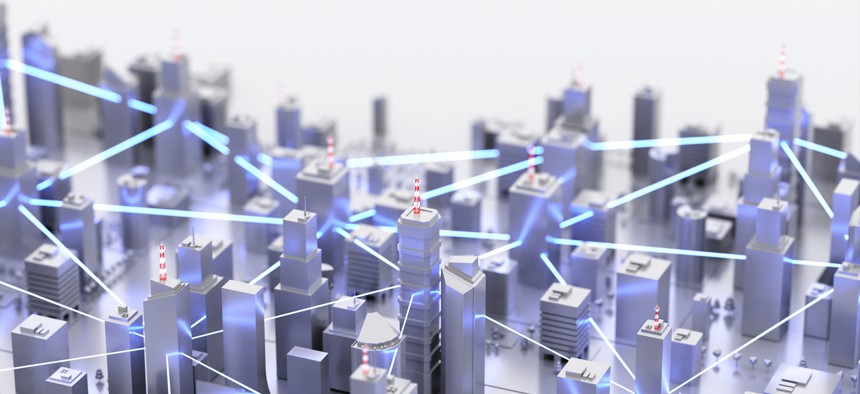How to effectively build a smart city infrastructure

hernan4429/Getty Images

Connecting state and local government leaders
An integration platform as a service solution supports data integration and cross-platform efficiency for resident health and safety, sustainability efforts and citizen engagement.
Across the United States, urban leaders are looking to move their cities forward to become digitally integrated smart cities that meet the needs of both citizens and governments. To do so, leaders must integrate citizen experiences, align with current IT modernization programs and simplify cloud complexity.
While focusing on citizen experiences, city leaders can take advantage of the distributed data collection and response capabilities that internet-of-things technologies provide to enhance public safety and improve how residents interact with their environments. For example, IoT tools that measure parking availability or traffic volumes can be captured and delivered to drivers in real time.
However, integrating IoT-enabled citizen experiences often calls for communication with legacy systems—which will require IT teams to address cloud complexity.
An integration platform as a service solution makes the necessary integration of data simple. It can help ensure maximum efficiency across different IT systems, including legacy systems. iPaaS creates seamless portals through a service-oriented architecture, supporting on-premises, public cloud, mainframe, container or edge environments. For smart cities and IoT technologies, iPaaS enables the flow of information between sensors, tablets, applications and more. It allows governments to minimize data silos, centralize information and maintain high-quality, accessible data.
Combining IoT sensors with iPaaS solutions makes it easy for city leaders to view real-time operational insights via a single portal, eliminating cloud complexity and working seamlessly with legacy systems. In Cary, North Carolina, for example, IoT data from stream sensors and rain gauges is being used to monitor and react to challenges associated with severe storms. Data is gathered and combined with various weather models to help the Public Works Department better plan and respond to flooding.
With many IoT technology options available, city governments should consider independent iPaaS solutions that can connect to any device or data source, such as autonomous vehicles. Las Vegas uses a bidirectional IoT network to receive and transmit real-time data among autonomous vehicles, traffic sensors, controllers and pre-emptive emergency vehicle signals along the Las Vegas Strip. Including an iPaaS solution upfront in any smart city initiative ensures efficiency through a common approach to integration as the project develops and expands.
iPaaS also supports low-code development, decreasing the need for extensive technical support and making integration quicker. Adoption is easy, with pre-determined connections already in place, saving tech workers time and governments money. As a cloud service, smart cities can then integrate IoT sensors almost immediately after adopting iPaaS.
iPaaS tools that embrace artificial intelligence and low-code methods help IT teams more effectively meet citizen needs faster. With iPaaS, employees can manage all of a smart city’s data with just one platform, streamlining and providing government staff with the data needed to make decisions.
Integrated data powers thoughtful decision-making and improved citizen experience, so a strong IT infrastructure at the back end of government supports citizen health and safety, sustainability efforts and citizen engagement. If, as predicted by Deloitte research, 70% of the world's population will live in urban centers by 2050, a few smart city initiatives won’t be enough to meet future urban citizen needs. True success requires seamless integration between all initiatives.
Joseph Flynn is principal technologist in the Office of the CTO at Boomi.




